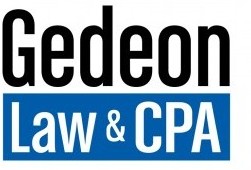Most Canadians and Australians who move to the US easily know their immigration residency status. What they do struggle with, however, is their residency status for US income tax purposes.
While its common knowledge that US citizens and green card holders are responsible for filing US tax returns, most people who move to the US on a non-resident visa – such as a TN, E-3, O-1, L-1 – are unfamiliar with the US tax residency rules that can subject them to US taxation on their worldwide income.
This is not surprising given that the definition of a resident for US tax purposes is mutually exclusive of the definition of a US resident for immigration purposes.
As a result, a non-resident for US immigration purposes, say an Australian working in the US on an E-3 visa, can in fact be a US tax resident who is subject to US taxation on their worldwide income. On the other hand, a non-resident for US tax purposes is subject to US taxation only on their US source income.
To assist our Canadian and Australian clients navigate the complicated US tax residency rules, we’ve prepared the following summary of the most common questions Canadians and Australians have when it comes to lodging a US tax return:
How Do I Become A US Tax Resident?
Simply put, you become a US tax resident if you are physically present in the US for at least 183 days in one calendar year. You can also be considered a resident under the Substantial Presence Test (SPT) if you spend, based on a special formula, at least 183 days in the US during the past three calendar years.
For Canadians who like to visit the US for cross-border shopping, beware because even those short day trips south of the border count as a full day for purposes of the 183 day threshold.
Conversely, an Australian or Canadian who is never physically present in the US for more than 120 days in each calendar year will not qualify as a US tax resident.
In case you’re wondering, as we explained in one of our other articles, the IRS does have the capability to track the number of days Canadians and Australians spend in the US.
What Happens if I Become A US Tax Resident?
Since most Canadians and Australians moving to the US for work on temporary visas are unlikely to spend less than 183 days in the US, they qualify to be taxed as US residents.
Although special rules beyond the scope of this article apply to a first year US tax resident, a US taxpayer lodges a Form 1040 and reports all their worldwide income, including all investment income, capital gains, rental income from non-US rental properties and foreign pension income.
Is There A Way To Avoid Being Treated As A US Tax Resident?
If a Canadian or Australian working in the US on a temporary visa qualifies as a non-resident taxpayer, then they lodge a Form 1040NR and generally only pay US income tax on wages earned while working in the US.
However, if you qualify as a US tax taxpayer, the following exemptions will allow you to lodge a US return as a non-resident:
a) Closer Connection Exception (CCE)
An Australian or Canadian who meets the SPT may avoid lodging a return as a U.S. resident by filing Form 8840.
To qualify to file the Form 8840, one must meet all the following criteria:
1) Have a “tax home” (usually where your family, permanent home and personal belongings are located) and a closer connection to Australia or Canada
2) Be physically present in the U.S. for under 183 days in the current calendar year; and,
3) File form 8840 to indicate this connection on a timely basis (filing this form late may cause you to be ineligible to claim the CCE).
b) Non-Residency Under The Treaty
In the event an Australian or Canadian working in the U.S. on a temporary work visa (most common E-3, TN, O-1 and L-1) is physically present in the US for at least 183 days in a single calendar year, it’s still possible to avoid U.S. residency by filing a Form 1040NR with a Form 8833 treaty election.
Generally, a treaty election is used when a taxpayer is considered a tax resident of both the US and Canada/Australia. In the case where a taxpayer is a simultaneous resident of both the US and Canada/Australia, the treaty acts as a tiebreaker to determine which country has the right to tax the taxpayer as a resident.
Both the US-Canada and US-Australia tax treaties contain a provision that allows a US taxpayer to be treated as a Canadian or Australian tax resident, and hence a US non-resident, if Canada/Australia is their permanent home.
If a taxpayer has a permanent home in the US and Canada/Australia, then it’s necessary to look at where a taxpayer maintains their center of vital interests, their habitual abode and their citizenship to break the tie.
Nevertheless, a person who uses the treaty to be taxed as a U.S. non-resident is still considered a US tax resident for other filing purposes. As such, Canadians and Australians need to report their financial accounts and interests in foreign corporations, trusts and partnerships to the IRS on the following forms:
• Foreign Bank Accounts (FinCen 114)
• Foreign Corporations (5471)
• Foreign Partnerships (8865)
• Foreign Trusts (3520/A)
Beware, fees to prepare these foreign compliance forms is expensive because they are complicated and time consuming.
Does California Follow The Same Residency Rules As The IRS?
Sadly, if lodging a federal return in the US wasn’t complicated enough, a whole set of different rules beyond the scope of this article apply to determine if a Canadian or Australian working in California is considered a California tax resident, and hence subject to California tax on their worldwide income. Since California is not a party to the US-Canada/Australia treaty, no foreign tax credits can be taken for any foreign taxes paid to Australia and Canada. In addition, since California is a community property state, special California community property tax rules apply with respect to splitting community income.
In Closing
Because few tax professionals deal with Canadian and Australians temporarily working in the US, it’s important to work with a firm that has the right expertise. At Gedeon Law & CPA, we regularly assist Canadians and Australians working in the US on temporary visas and are available to assist with properly assessing your US tax residency and preparing the necessary US, Canadian and Australian tax filings.




